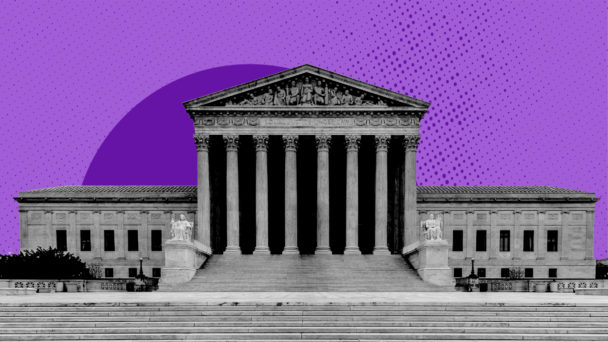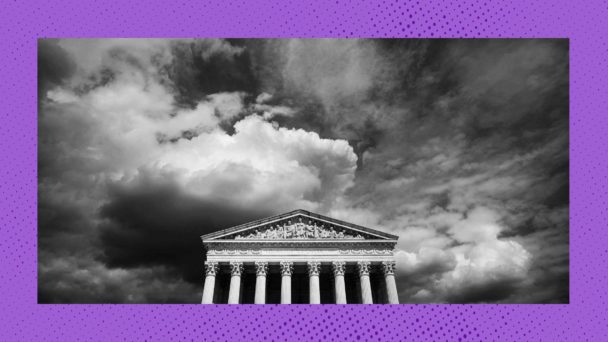The Supreme Court just handed itself a(nother) generational victory. In a 6-3 decision issued on Friday, Chief Justice John Roberts and his five far-right colleagues ruled that federal courts—not administrative agencies—should be the ones who get the final say on all federal policy, upending the administrative state and our country’s ability to function along with it.
Even in a term marked by judicial power grabs, the ruling in Loper Bright Enterprises v. Raimondo serves as the conservative legal movement’s crowning achievement. It concentrates policymaking power not in the hands of democratically elected actors, and not in the domain of subject-matter experts responding to congressional direction, but in the control of unelected, unaccountable judges and justices. On paper, Loper Bright sounds obscure and technical: A case about an executive agency’s ability to regulate and monitor fishing boats that harvest herring in the Atlantic Ocean. In reality, it is about who decides what the law is.
The basic question in Loper Bright is whose interpretation wins when an agency reads an ambiguous statute one way, and a court reads it another. Here, when federal law says that the National Marine Fisheries Service can require commercial boats to carry observers monitoring compliance with conservation efforts, can the NMFS require that the owners of the boat help pay the costs associated with having that observer on board? This is a fairly basic and extremely mundane question about how an agency responsible for instituting a congressionally-enacted statute chooses to do its job. The lower courts who looked at this case said that the agency reasonably interpreted the law, and therefore its policy could stand.
The six conservative justices on the Supreme Court, however, felt differently. According to Roberts, it is only judges who get to interpret the scope of ambiguous laws—in this case, who get to decide whether Congress has indeed permitted the monitoring scheme enacted by the NMFS. “Courts must exercise their independent judgment in deciding whether an agency has acted within its statutory authority,” Roberts wrote, and “may not defer to an agency interpretation of the law simply because a statute is ambiguous.”
In order to understand the impact of Loper Bright, you first need to understand the case it overruled: Chevron v. Natural Resources Defense Council, a case the Court decided in 1984. In Chevron, the Court wrote that if the meaning of a statute is ambiguous, and someone challenges an agency’s interpretation of the statute in court, the agency responsible for enforcement receives deference. The basic idea is that the people best situated to carry out the day-to-day work of governing are scientists and subject matter experts who are accountable to elected officials and the people they represent—not judges with a handful of recent law school graduates tasked with doing Wikipedia research.
In Chevron, the Court was looking at the enforcement of the Clean Air Act, which said that any new “stationary source” of air pollution had to go through an intensive review process. The problem is that the Clean Air Act didn’t define what “stationary source” meant: a new smokestack at an existing plant? An entirely new plant? Something in between? The Court determined that, given the lack of direction in the statute, the Environmental Protection Agency had the authority to decide what “stationary source” would mean. Again, the EPA employed experts in environmental regulation; the specific details would be left up to them.
The Court did three important things in Chevron. First, it ensured that administrative agencies, which are responsible for so much of governance in the United States, would be able to function. Take the Federal Trade Commission, which is responsible for protecting consumers from “unfair or deceptive practices.” If the FTC had to wait for Congress to determine that every single shady business practice fell within the precise contours of this generic language, it would never protect anyone from anything. By allowing Congress to pass general statutes and giving agencies the power to, essentially, fill in the blanks, the Court ensured that agencies would do the jobs assigned to them by the people’s representatives in Congress.
Second, the Court helped align public policy with real-world election results. When voters choose a new president, that president has the power to set new directions for administrative agencies. For example, when Donald Trump was elected, he put Scott Pruitt, who doesn’t believe in environmental regulations, in charge of regulating the environment. By contrast, when Joe Biden was elected, he picked Michael Regan, a longtime champion of the use of government power to address climate change, for the same role. Because the EPA has the authority to exercise its judgment no matter who is in charge of it, these personnel differences have a significant impact on how agencies like the EPA go about their work.
To conservative critics of agency action, the fact that EPA rules change under different administrations is evidence of Chevron’s inherent unworkability. But in a democracy, policy is supposed to change when the people decide that it should. And in a sprawling nation of 330 million people, building a functioning administrative state, directed by Congress and the president, is the only way to ensure that elections have consequences.
Finally, the Court’s Chevron opinion ensured that expertise mattered. Members of Congress cannot be steeped in the nuances of food and drug safety, but the regulators at the Food & Drug Administration sure can. Decisions about, say, whether an alpha amino acid polymer qualifies as a protein and is therefore a biological product that can be regulated under the Public Health Service Act are much better made by scientists at the FDA than the reactionary brain trust of Marjorie Taylor Greene and Lauren Boebert.
Chevron, in short, helped build at least a semblance of a working government. By overruling it, the Court has looked at this messy-but-functional status quo and decided that unelected, uneducated, and unaccountable judges should have more power, not less. As Justice Elena Kagan writes in dissent, the result in Loper Bright “puts courts at the apex of the administrative process as to every conceivable subject.” This is “not a role Congress has given to them,” she concludes. “It is a role this Court has now claimed for itself.”
The implications of Loper Bright are too sweeping to exhaustively detail here, but its impact will be especially relevant in cases where, say, a federal agency is in Democratic hands, and a reviewing court is in conservative hands. How should “forever chemicals” be regulated? Don’t ask scientists who understand these chemicals’ harmful impacts on humans and the environment—ask Justice Neil Gorsuch, whose expertise is such that he recently authored an opinion about EPA regulation of “nitrogen oxides” while repeatedly referring to “nitrous oxide,” better known as laughing gas. How should geographic areas be defined for purposes of Medicare hospital reimbursements? Previously, that would have been a good question for the people running Medicare; now, it could fall to the likes of Judge Aileen Cannon. What regulations can the Occupational Safety and Health Administration issue to protect workers engaged in potentially dangerous work? That’s a fantastic decision not for regulators who have spent their careers dealing with actual workplace injuries, but for Judge Jim Ho, who is of the opinion that doctors experience an “aesthetic injury” when a woman gets an abortion.
In a democracy, we are supposed to be ruled by the people and our elected representatives. The far-right, antidemocratic Supreme Court is committed to ensuring that we live in a country ruled by judges instead. The conservative judiciary is abrogating untold amounts of power to itself, ensuring that regardless of election outcomes, the conservative project continues unabated.







